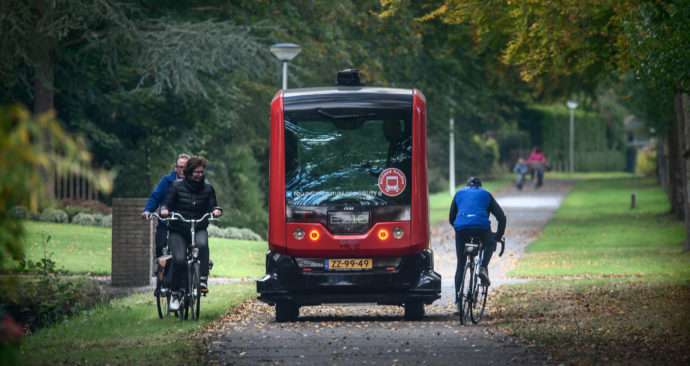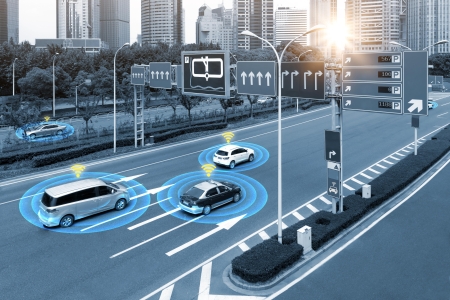It is not entirely clear yet to what extent self-driving shuttles, also called people movers, are safe for their occupants and for other road users. This is because these vehicles are still being developed and are not widely used yet.
A self-driving shuttle is a highly automated minibus that can transport several passengers, usually 4-12 [27]. Currently, there are self-driving shuttles on specific roads in specific European areas, of which some are located in the Netherlands.
The self-driving shuttles that are now undergoing road testing, have not been fully developed yet. For example, they stop when they detect anything (road users, static objects, etc.) within a certain distance [28]. Moreover, they generally drive very slowly, with an average speed of less than 21 km/h [28] or sometimes even with a maximum speed of 15 km/h [15]. These shuttle characteristics may result in dangerous overtaking manoeuvres by other road users [28], which could increase crash and injury risk [15].

When the self-driving shuttles have been further developed, they may improve road safety since they may reduce the number of road conflicts [29], although the effect of allowing this type of vehicle onto the public road is not precisely clear yet (see the question Will self-driving vehicles improve road safety?).
